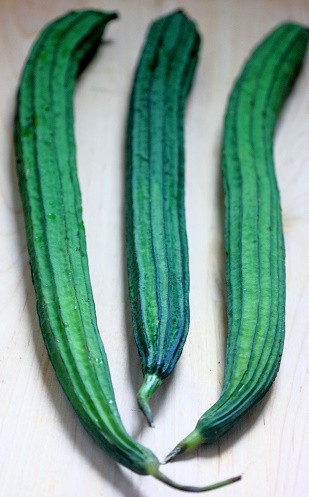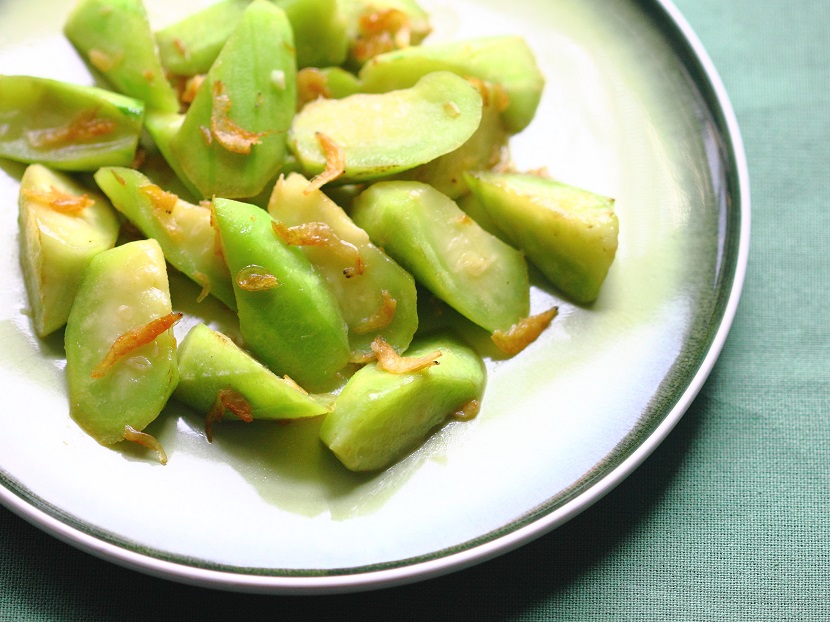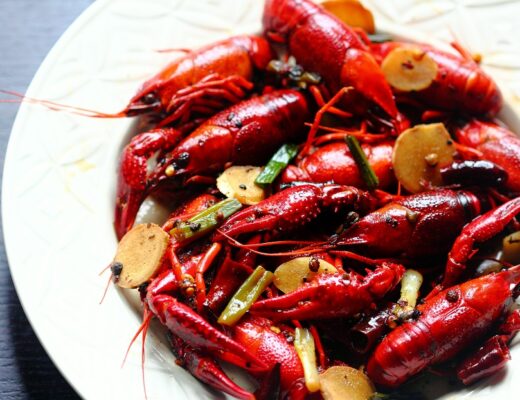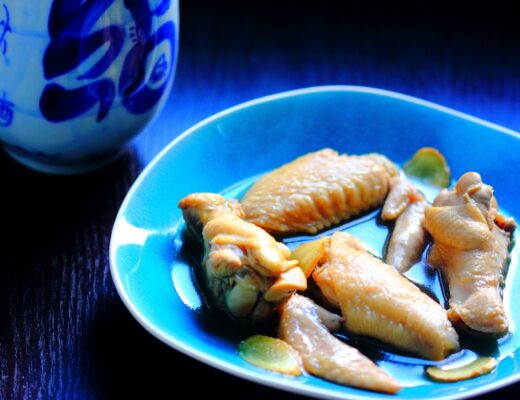Last Updated on October 9, 2020 by Simon Fan
Loofah (aka luffa) is a mysterious and fascinating gourd.
When loofah is allowed to fully ripen and dry out on the vine, it becomes fibrous and is used as a natural bath sponge which most people are familiar with. However, when picked young, it’s a vegetable used throughout Asia and parts of Africa.

In China, loofah is a beloved vegetable in the summer for its cooling properties. Called Si Gua (丝瓜) in Mandarin, meaning “silk gourd,” it’s often stir-fried, steamed, or added to soups.
Two varieties exist: the smooth one called common loofah, and the ridged one called angled loofah. While both are commonly used in Chinse cooking, the angled loofah, as shown in the picture to the left, is the tastier one of the two. Beneath its rough green skin, you can find white and soft flesh that turns wonderfully silky and slightly sweet when cooked. Because of its porous texture, it absorbs well the flavors of other ingredients during cooking.
If you’re new to cooking with loofah, peeling it might be the only “challenging” task, but you’ll quickly get the hang of it. Simply use a swivel peeler to remove the ridges and the dark green peel, but try to keep the pale green layer underneath, which adds both flavor and texture to the dish.
Once peeled, you can cut the loofah into slices, or bite-sized chunks using the Chinese roll-cut method as shown in the picture. It’s a beautiful cut, isn’t it? Be sure to peel and slice loofah just before cooking, or the sliced pieces would turn dark due to oxidization.
Look for loofah at Asian grocery stores or farmers’ markets, and choose the ones that are small and firm.
My favorite way of cooking loofah to give it a brief stir-fry with strong-flavored ingredients such as garlic, onions, pickles, or tiny dried shrimp as in the recipe below. I like to cook loofah to the point that its flesh has softened but still retains a crisp texture.
Tiny dried shrimp, or Xia Pi (虾皮) in Mandarin, is a great ingredient to boost umami flavor in savory dishes. They’re made with small shrimp belonging to the genus of Acetes, which are typically 1 to 3 centimeters long and translucent. The unshelled shrimp are dried either raw or after boiled with salted water. You can find Xia Pi at Asian grocery stores. The best ones are minimally processed, i.e., dried without boiling.
Stir-fried loofah with tiny dried shrimp
Serves 2
Ingredients
1 lb (450 g) loofah
2 tablespoons vegetable oil
2 tablespoons tiny dried shrimp (Xia Pi 虾皮)
2 tablespoons water
2 teaspoons fish sauce or soy sauce
Salt and freshly ground white pepper
Directions
- Use a swivel peeler to remove the ridges and the dark green peel of the loofah, and retain as much as possible the pale green layer underneath. Cut the loofah crosswise into slices, or into bite-sized chunks with the Chinese roll-cut method: start at one end and make a diagonal cut, then make a 45-degree turn and cut at an angle again; continue cutting and turning until you reach the other end. Try to keep the pieces around the same size.
- Place a wok or skillet over medium heat until hot, then swirl in the oil. When the oil starts to shimmer, add the dried shrimp and stir-fry quickly until fragrant, about 15 seconds. Add the loofah, turn up the heat, and stir and toss for 1 minute. Splash in the water, and stir and cook until the loofah has softened but still retains a crisp texture, 1 to 2 minutes. Mix in the fish sauce or soy sauce. Adjust the seasoning with salt and pepper as needed, and serve right away.






Steamed loofah with shrimp | Soy, Rice, Fire
June 2, 2021 at 9:42 AM[…] You can find out more information about loofah and a stir-fried loofah recipe from this post. […]